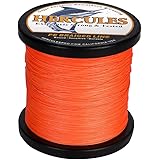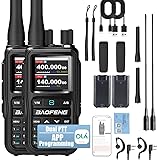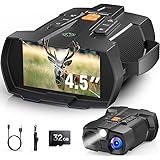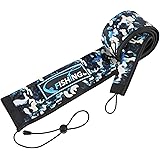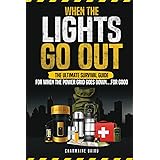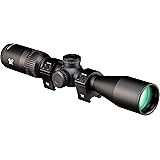The Survival Medicine Handbook: Your Essential Guide to Emergency Medical Care in Grid-Down Scenarios
Have you ever pondered what you would do if a significant medical emergency struck and professional assistance was simply unavailable? The scenario of a grid-down predicament or a widespread disaster often removes access to modern medical facilities and expert care. In such times, your standard first aid knowledge might prove insufficient, leaving you unprepared for the unique challenges ahead. The video above introduces what many consider the definitive resource for emergency medical care in off-grid situations: the fourth edition of “The Survival Medicine Handbook.” Authored by Dr. Joe and Amy Alton, this comprehensive guide offers vital information for anyone serious about self-reliance during a crisis.
This particular edition of “The Survival Medicine Handbook” stands out, now available in full color, making complex anatomical diagrams and treatment procedures easier to understand. The Altons, whom the narrator has interviewed previously, are renowned experts in the field of survival medicine, dedicated to empowering individuals with the knowledge to act effectively when no other help is available. Their commitment to updating this crucial text ensures that it remains the most concise and complete compendium for managing health crises without the benefit of modern infrastructure. It truly serves as an indispensable reference for every prepper and preparedness enthusiast.
Building Your Lifeline: Essential Medical Kits
One of the most immediate and actionable sections within “The Survival Medicine Handbook” focuses on assembling various medical kits. This goes far beyond a basic bandage and antiseptic, diving into the strategic construction of an Individual First Aid Kit (IFAK), a robust family medical kit, and specialized vehicle emergency kits. Furthermore, the book provides detailed checklists and comprehensive ideas for building more advanced trauma bags, capable of handling significant injuries. Even seasoned preppers, like the narrator, who possess extensive personal medical kits, find invaluable insights and items they might still need to acquire for a truly complete setup, emphasizing the thoroughness of the Altons’ research.
The guidance provided helps readers navigate the complexities of medical supplies, ensuring they are not only well-stocked but also organized for efficient use during high-stress situations. Understanding the purpose of each item and how to deploy it rapidly can dramatically impact patient outcomes. This foundational chapter acts as a blueprint, allowing individuals to customize their kits based on their specific needs, anticipated threats, and skill levels. Having a well-prepared medical kit is often the first line of defense in any serious survival scenario, making this section critically important.
Understanding the Body: Diagnostics and Environmental Challenges
Beyond supplies, “The Survival Medicine Handbook” delves into essential diagnostic skills, teaching readers how to perform a physical examination when a professional doctor is absent. This includes monitoring vital signs such as pulse rate, respiration rate, and body temperature, which are fundamental for assessing a patient’s condition and tracking recovery or decline. The book’s strength lies in its clear, well-illustrated guidance, available in both color and black-and-white versions, though the color edition significantly enhances visual comprehension for these complex topics.
Additionally, the Altons address critical environmental issues that often arise in disaster scenarios. Chapters are dedicated to managing hot and cold conditions, covering everything from hypothermia and frostbite to altitude sickness. Such knowledge is paramount for survival in diverse geographical and climatic conditions. The book also provides crucial advice for dealing with specific natural disasters like blizzards and hurricanes, along with strategies to combat waterborne illnesses, a common threat when infrastructure fails. These sections equip individuals with practical solutions for environmental health challenges.
Navigating High-Stakes Threats: NBC and Trauma
A section particularly popular among the preparedness community addresses Nuclear, Biological, Chemical, and Radiological (NBC) threats. This critical information guides readers on appropriate responses if exposed to radiation and how to deal with the terrifying realities of nuclear fallout. Understanding these complex hazards and having actionable steps can be the difference between life and death in an extreme scenario, providing a framework for protective measures and decontamination protocols. This foresight is a cornerstone of comprehensive emergency preparedness, helping individuals mitigate the unseen dangers.
The book also extensively covers various types of trauma and immediate life-saving interventions. Readers learn about stopping severe bleeding through techniques like tourniquet application and the use of clotting agents. Major trauma, including gunshot wounds, stab wounds, and rib fractures, is tackled with practical advice on field treatment, including how to perform minor surgeries and apply chest seals. This hands-on knowledge is invaluable for managing severe injuries when professional medical facilities are out of reach, offering critical guidance for situations where seconds truly count for survival.
Addressing Common Ailments and Chronic Conditions Without Modern Aid
The “Survival Medicine Handbook” meticulously breaks down how to manage a vast array of medical issues affecting various body systems. For instance, the extensive section on head injuries covers everything from acquired brain injury to common eye, ear, and nasal infections. It stresses the importance of recognizing and treating these afflictions when no doctor is available, ensuring critical care during a crisis. Similarly, dental issues, a universal pain point, are given significant attention, with guidance on dealing with abscessed teeth, pain management, and even tooth extraction. The narrator correctly advises addressing any pre-existing dental problems promptly, as the absence of modern dentistry and anesthetics in a grid-down situation would be truly nightmarish.
Respiratory issues, highly relevant in any community crisis, are discussed in detail, including lung disease, asthma, and various upper and lower respiratory infections. Heart issues, such as how to deal with a heart attack, are covered, supplementing basic CPR training. The broad abdominal issues section tackles kidney problems, food poisoning, intestinal tract infections, diarrhea, and liver issues. Urinary tract issues, including the excruciating prospect of passing a stone without medical aid—a scenario vividly depicted on a post-apocalyptic reality show—are also addressed. Moreover, the book unflinchingly discusses sexually transmitted diseases (STDs), highlighting the dangers of their spread without proper hygiene and limited access to antibiotics after a societal breakdown, emphasizing prevention and basic treatment strategies when resources are scarce.
Dealing with musculoskeletal injuries like fractures, complete breaks, or dislocations is another critical area covered, offering practical techniques for stabilization and pain management. Skin issues, ranging from rashes and blisters to various infections, are explained, providing remedies and care strategies. Animal stings and bites, including those from potentially disease-carrying animals, also receive comprehensive attention. Furthermore, a crucial chapter focuses on allergies and anaphylaxis, detailing remedies and actions to take when EpiPens or professional help are unavailable, stressing immediate, life-saving interventions. This practical advice offers vital hope for those with severe allergies in a crisis.
Logistics of Emergency Care: Transport, Childbirth, and Medications
Beyond immediate treatment, “The Survival Medicine Handbook” addresses the logistical challenges of emergency care. Patient transport is a vital skill, as safely moving an injured individual—whether with fractured ribs or broken bones—requires specific techniques to prevent further harm. This practical knowledge is essential for ensuring a patient reaches a safe haven or receives necessary follow-up care. The book provides clear instructions for various transport scenarios, enabling caregivers to act confidently.
Perhaps one of the most daunting scenarios for anyone in a crisis is childbirth without professional assistance. The book guides readers through this entire process, acknowledging that while humanity has done so for millennia, modern society has made most people unaccustomed to such a raw experience. It equips expectant families with the knowledge to manage labor, delivery, and postpartum care in a challenging environment. Additionally, the Altons tackle the complexities of chronic medical conditions such as heart disease, thyroid issues, hypertension, seizure disorders, and diabetes, offering strategies for managing these ongoing health challenges when access to regular medications and medical oversight is severely limited. This long-term perspective is often overlooked but incredibly important for sustained survival.
Mental health also receives a dedicated section, discussing anxiety and depression, acknowledging the psychological toll of a disaster. Finally, a comprehensive chapter on medications, including antibiotics, delves into crucial details like expiration dates, storage, and appropriate usage. This section provides invaluable guidance on conserving and utilizing vital pharmaceuticals effectively. Dr. Joe and Amy Alton’s “Survival Medicine Handbook” is undoubtedly a reference guide that belongs in every prepper’s library, offering unparalleled depth and breadth for comprehensive emergency medical care in any crisis.



